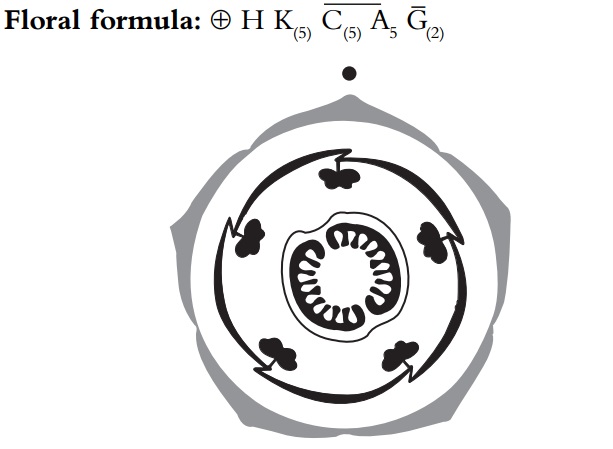Solanaceae
| Home | | Pharmacognosy |Chapter: Pharmacognosy and Phytochemistry : Study of Different Families
Habit: These are herbs and shrubs; bicollateral bundles or internal phloem are often present. Leaves: These are simple, sometimes pinnate, as in tomato, and alternate.
SOLANACEAE
Habit: These are herbs and shrubs; bicollateral bundles or
internal phloem are often present.
Leaves: These are simple, sometimes pinnate, as in tomato, and alternate.
Flowers: These are regular, seldom zygomorphic, as in Brunfelsia, bisexual and hypogynous.
Calyx: The sepals are (5), united and persistent.
Corolla: The petals are (5) and united. It is usually funnel
or cup shaped, five lobed. The lobes are valvate or twisted in the bud.
Androecium: The stamens are five, epipetalous and alter-nate
with the corolla lobes. The anthers are apparently connate and often open by
means of pores.
Gynoecium: The carpels are (2) and syncarpous. The ovary is
superior and obliquely placed. It is two celled or sometimes four celled, owing
to the development of a false septum, as in tomato
and thorn apple. There are many ovules
in each chamber. The placentation is axile.
Fruit: The fruit is a berry or capsule with many seeds.

Examples: Atropa belladona, tomato, capsicum, datura, etc.
Related Topics
